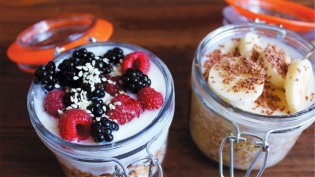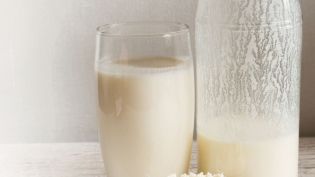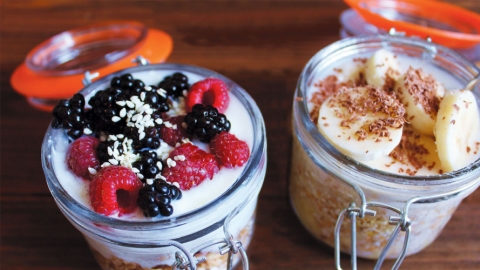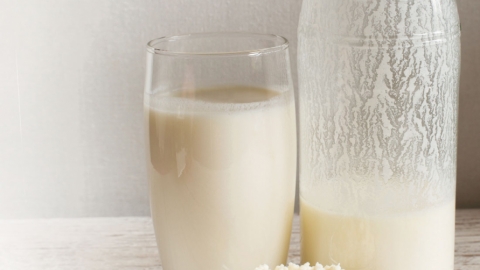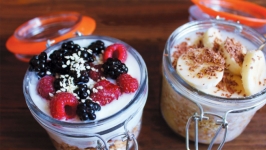Get Cultured
Make nutritious and delicious cultured milk products in your kitchen
I first made yogurt while living on a remote farm in Norway. It was a summer that truly changed my life. We would take a sunset walk about a mile out to pasture and call for the animals to come. The cows had about 5,000 acres to roam, but they would usually be near the gate waiting for us as the sun fell low in the sky. Ninny led them home so that she could feel the relief of being milked. Milking Ninny in the barn during the everlasting sunset of the far northern climate remains one of my most profound experiences. I always enjoyed the gentle sounds of her chewing and the soft feeling of her fur when I would nestle into her side as I milked her. On this isolated farm, it was astonishing how much nutrition came from this one animal and what sweet companionship she offered.
Often, we would take the warm milk, filter it into another clean bucket, add a certain amount of yogurt to it and cover it with a cloth to prevent contamination. Then, we would rest that bucket in the corner of the mudroom, which had a heated floor. The next day the entire bucket would be yogurt and we would enjoy it for a whole week. We would eat yogurt and muesli for breakfast and yogurt and fresh berries as an afternoon snack.
Both yogurt and kefir offer ways to preserve fresh milk for a little longer by adding cultures to encourage coagulation and make the milk more acidic. Both are loaded with beneficial bacteria that make everything easier to digest and can aid in recovery from all sorts of ailments. Yogurt typically has two to seven different kinds of bacterial strains that can help clean and line the gut while nourishing the good bacteria, or probiotics, there. Kefir has 10 to 34 strains of good bacteria and beneficial yeast, which can also attach to the walls and colonize to create a healthy digestive tract.
YOGURT
Throughout the process of making yogurt you need to keep the temperature at about 110°. There are many insulated chambers on the market to aid you in doing this, but they are not necessary. You can get creative and create your own warm environment. Some people use a heating pad, a small cooler containing a jar of hot water, a piloted oven or a hot water heater closet, a heated floor in a small room or a spot next to a wood stove. Conditions change from home to home but your goal is to keep the yogurt at about 110°. It can take between eight and 24 hours for the milk-starter culture mixture to turn to yogurt. You can test your environment by experimenting with a jar of water and leaving it overnight in your desired place and checking the water temperature in the morning.
You will need a starter culture to make your yogurt. For this, you can use any commercial live-culture yogurt. Be sure the label says, “contains live cultures.” Then you save a little of the yogurt you make to use as a starter for the next batch and keep it going from there.
See the homemade yogurt recipe from Patrick Fahy, executive pastry chef, Four Seasons Hotel Westlake Village, link at left.
KEFIR
Kefir is a fermented milk product that is started by a special colony of grains. These grains are actually yeast and bacteria that look like curds, which you strain out of the kefir after fermentation and then use for the next batch—like sourdough starter. You cannot make kefir without this starter culture.
Kefir’s roots lie in the Caucasus Mountains of Central Asia. Said to have been a gift from Allah, the first kefir grains were treasured by the people who possessed them and were not shared with strangers. So how did they finally migrate to the rest of the world? I have to quote my hero Sandor Katz, as he has written the story with perfection in his book, Wild Fermentation (Chelsea Green Publishing, 2016).
“Early on in the 20th century, the ‘all-Russian physicians’ society’ became interested in obtaining the mysterious source of this healthful drink,” Katz writes. “Since the keepers of the grains did not wish to share them, this required deception and cultural thievery. The scheme involved a young Russian woman named Irina Sakharova, who the physicians hoped would be able to charm a Caucasus prince, Bek-Mirza Barchorov, into giving her some kefir grains. He refused, she tried to leave, he had her kidnapped, she was rescued and he was charged in the czar’s courts. For reparations, the young woman was awarded the treasure she sought; the court ordered the prince to give her some of his cherished kefir grains. In 1908, she took the first kefir grains to Moscow. Kefir became, and remains to this day, a popular drink in Russia. In 1973, at age 85, Irina Sakharova was formally recognized by the Soviet Ministry of Health for her role in bringing kefir to the Russian people.”
I think it important to understand this part of the history of food preservation. We can easily take for granted that we can just order kefir grains from an online store and they will be delivered to our doorstep within two days. This story reminds us of a time when people knew the health benefits of food and were willing to risk everything to obtain just a few cultures. People also believed the health of their extended families depended on fresh kefir, and they protected it from outside invaders as the treasure that it was. It is a treasure just to get a glimpse of that kind of fervor for this healthy probiotic drink.


